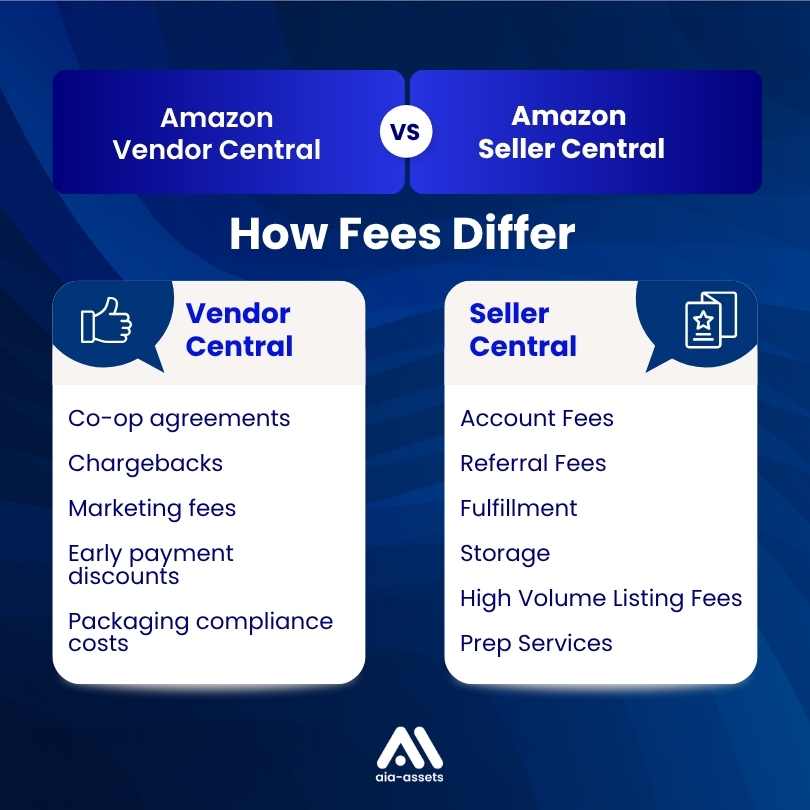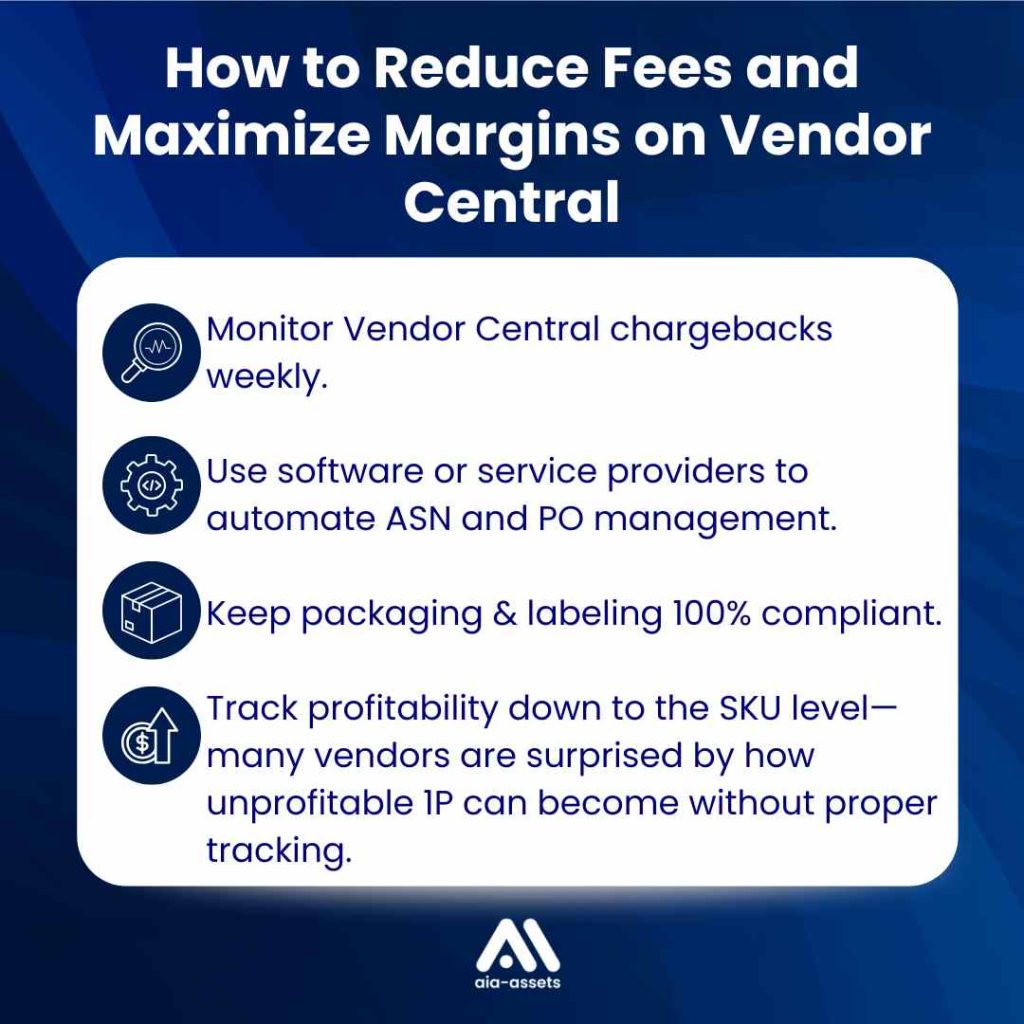If you’re considering expanding into Amazon Vendor Central (Amazon 1P), you’ve likely heard about the promise of increased volume, PO-based relationships, and streamlined operations. But what often catches new vendors off guard is the complex fee structure that comes with being an Amazon supplier.
We are going to break down how Amazon Vendor Central fees work, what you can expect to pay, and how to navigate these charges strategically—so you can maximize margins.
Vendor Central vs. Seller Central: How Fees Differ
In Seller Central (3P), Amazon takes a referral fee (typically 8-15%) and optional fulfillment/storage fees. But in Vendor Central (1P), fees are not so transparent. Instead of a fixed “commission,” Amazon deducts various fees through negotiated terms and backend deductions, including:
Co-op agreements
Chargebacks
Marketing fees
Early payment discounts
Packaging compliance costs

Let’s break these down.
1. Co-Op (Cooperative) Terms
This is the largest fee category in Amazon Vendor Central.
Co-op fees are negotiated during vendor onboarding and often include:
Fee Type | Typical Range | Description |
Base Discount | 4–10% | A standard % discount off your invoice price to Amazon |
Marketing Development Fund (MDF) | 5–10% | Used for marketing and promotional activities run by Amazon |
Damage Allowance | 1–2% | Amazon keeps this to cover potential product damage |
Freight Allowance | Varies | For vendors using Amazon’s freight services |
These can total up to 15–25% of your wholesale cost, significantly reducing your margins.
2. Chargebacks
Amazon chargebacks are financial penalties imposed when a vendor fails to comply with Amazon’s operational requirements.
Common chargebacks include:
Late or unconfirmed shipments
Missing Advance Shipment Notifications (ASN)
Improper labeling or packaging
Shortages (less product delivered than invoiced)
Each violation comes with a per-unit or per-order fee, which can quickly add up if not managed correctly.
3. Early Payment Discounts
To improve cash flow, Amazon offers early payment terms—but in exchange, they’ll take a percentage of your payment.
For example:
Net 60 – 2% 30 means Amazon will pay in 30 days instead of 60 if they can deduct 2% of the invoice amount.
These seem optional but are often embedded in the contract, so vendors should carefully read the fine print.
4. Marketing & Promotional Fees
Some vendors participate in Amazon Retail Marketing programs, like:
Amazon Vine
Subscribe & Save
Deals & Coupons
Participation in these programs can bring sales velocity, but fees are often deducted directly from your remittance or included in your co-op terms.
5. Packaging & Preparation Fees
If your products don’t meet Amazon’s prep and packaging standards, Amazon may perform those services for you—and deduct fees.
This includes:
Labeling
Polybagging
Bubble wrapping
Case packing
To avoid these charges, vendors must fully understand Amazon’s vendor prep requirements.

How to Reduce Fees and Maximize Margins on Vendor Central
Negotiate co-op terms upfront and annually.
Monitor Vendor Central chargebacks weekly.
Use software or service providers to automate ASN and PO management.
Keep packaging & labeling 100% compliant.
Track profitability down to the SKU level—many vendors are surprised by how unprofitable 1P can become without proper tracking.
Final Thoughts: Is Vendor Central Worth It?
Amazon Vendor Central offers high-volume exposure, but needs to be properly manages and set up as not to effect your profit margins.
If you’re considering entering Vendor Central—or acquiring a Vendor Central account—understanding the full structure of Amazon Vendor fees is critical.
At AIA Assets, we help brands acquire Vendor Central accounts that come with pre-negotiated, favorable terms, fast disbursement schedules, and strong compliance history—so you don’t have to start from zero.
📩 Curious if Vendor Central is right for your brand?
Contact AIA Assets to explore aged Amazon 1P accounts that set you up for success from day one.

